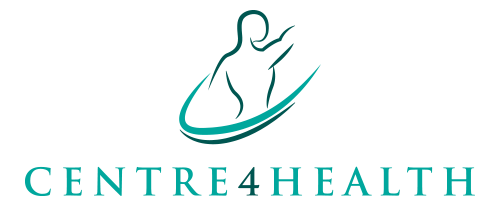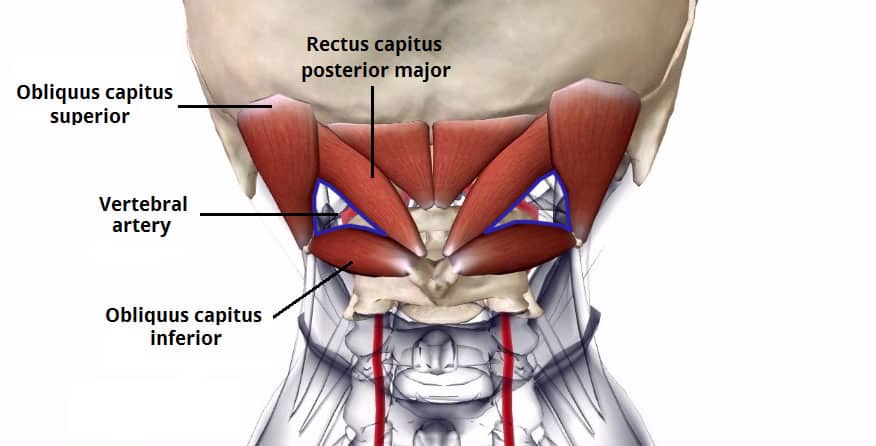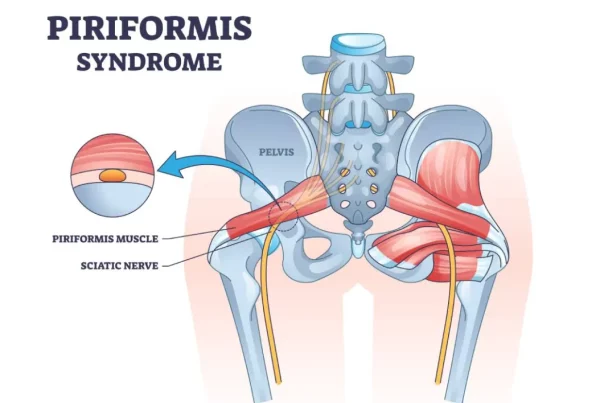The neck is a very mobile part of the body, meaning that a lot of different muscles are tasked with maintaining its stability and supporting the weight of our head. The sub-occipital muscles are a very important group of stabilising muscles. Located just underneath the back of your skull, they connect, stabilise and mobilise the joints between the skull, C1 and C2.
The suboccipital region is a muscle compartment, located inferior to the external occipital protuberance and the inferior nuchal line. These are anatomical landmarks on the occipital bone of the skull. It is of a pyramidal shape and includes the posterior aspects of the atlas and axis (C1 and C2 vertebrae respectively). This region comprises four pairs of small muscles:
- Rectus capitis posterior major
- Rectus capitis posterior minor
- Obliquus capitis inferior
- Obliquus capitis superior
These muscles mainly function as postural muscles but can also contribute to movements of the head.
The main action of the suboccipital muscles is to maintain posture. However, they can also produce movements of the head. These movements include extension, lateral flexion and rotation at the atlanto-axial joints and are summarised below:
- Rectus capitis posterior major – extension and rotation to the ipsilateral side
- Rectus capitis posterior minor – extension and rotation to the ipsilateral side
- Obliquus capitis inferior – rotation to the ipsilateral side
- Obliquus capitis superior – extension and lateral flexion
Flexion and rotation of the head in the contralateral direction are other movements at the atlanto-occipital joint but are carried out by other muscles in the neck.






